Global high-mix volume high-speed Shenzhen PCBA manufacturer

Ru
9:00 -18:00, Mon. - Fri. (GMT+8)
9:00 -12:00, Sat. (GMT+8)
(Except Chinese public holidays)





Global high-mix volume high-speed Shenzhen PCBA manufacturer

Ru
9:00 -18:00, Mon. - Fri. (GMT+8)
9:00 -12:00, Sat. (GMT+8)
(Except Chinese public holidays)





HomePage > Blog > Knowledge Base > How to Clean a Circuit Board
For the manufacturing of PCB boards, different processes and materials are involved. Due to those materials and methods, PCBs become contaminated due to chemical use and soldering processes that create residue on board. As a result, moisture and other dust particles collected on board, causing corrosion and some damage. So there is a need for a proper cleaning process to avoid component damage and adequate working for the board.
Circuit boards used in different projects and assemblies were affected due to dust and other particles. That affects the board's working and component functions. So, for the board's proper work, different cleaning techniques are used. We'll talk about them here. Let's get started.
There are different factors involved that cause the board to get dirty with time, such as dust particles, etc., when used for longer durations without proper cleaning. This leads to the malfunctioning of both the board and the linked circuit. Devices that have fans on boards have a high chance of getting dust and airborne debris internally and causing the overheating of the board and, in time, component damage.
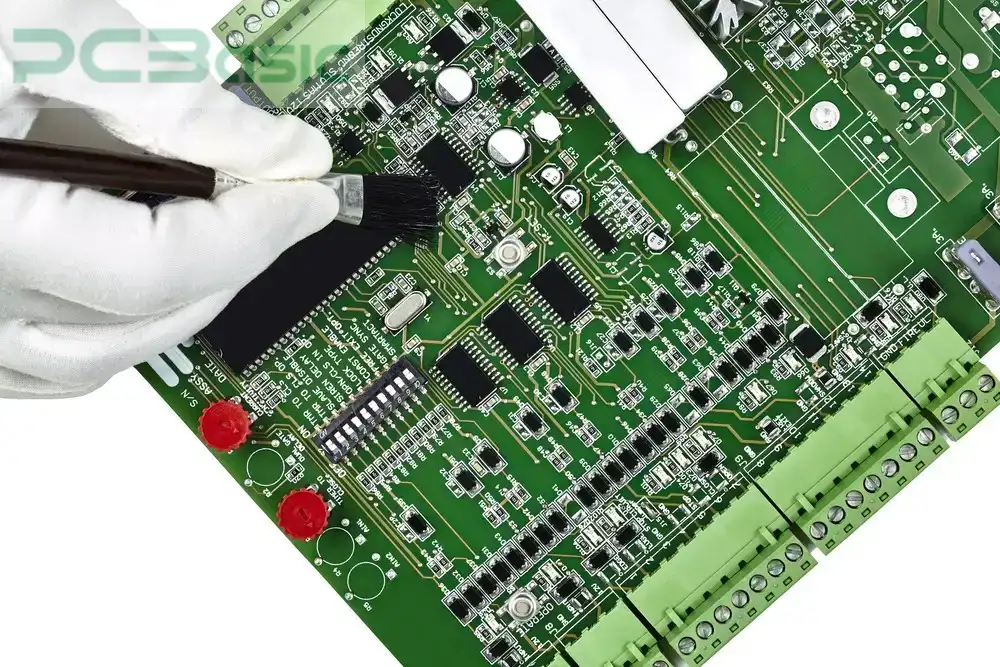
Follow these steps to clean the board of dust particles.
1. Remove the device from the power source and check that there is no component connected to getting power from any supply source. Then disconnect the components that are connected to the boards without any damage.
2. Now check the board with the naked eye so that there is no damage, corrosion, or any dirt on the board. Point out the points that have dust or dirt particles that need to be cleaned.
3. To remove dust particles, use an air compressor and direct air to a point where a larger number of dust particles are gathered and removed with pressure.
4. After that, use the anti-static brush that helps to retain particles that are not removed with air pressure. With that, clean the corroded part or solder joints on boards that are caused by dust at the time of soldering.
5. There are different types of cleaning agents, such as isopropyl alcohol, acetone, or baking soda. Use them to clean the dirt particles, and the cleaning process is performed gently so that it does not affect the components.
6. Cleaning such points is complex because there are complicated circuit configurations. Use tweezers to clean those points.
7. After cleaning dust and dirt particles on the board, leave the board for some time to get clean, or use microfiber for drying the board. Before connecting the board with the circuit again, make sure that the board is properly dry.
8. Now again connect the board with the circuit and all components of the devices assembled on the board
At the time of connection of electronic components on boards, there is flux applied on the board. Flux is used for component solidification according to circuit demands. At the time of the soldering process, residue exists on board due to flux applications and need to be removed to avoid etching wiring. That extra solder causes damage to the board and needs to be removed.
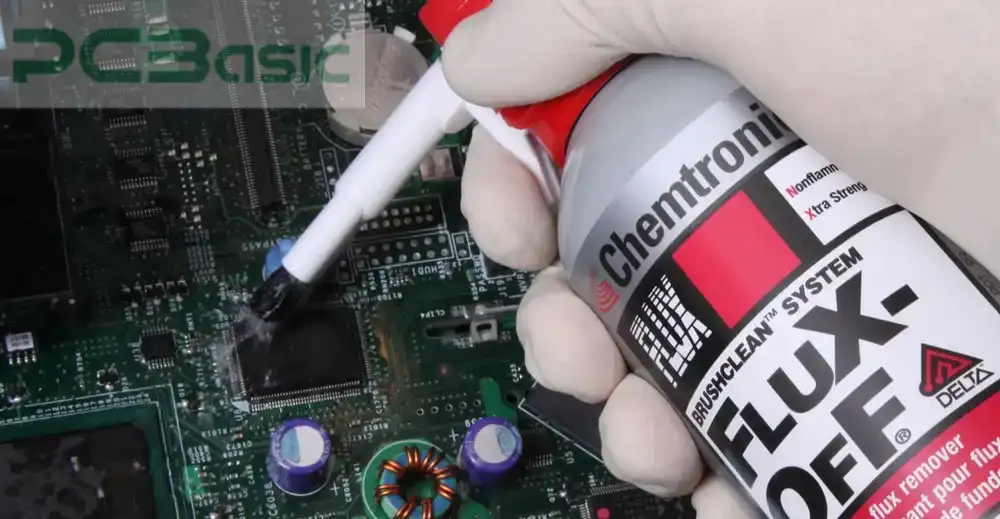
Follow these steps to remove extra solder from the board.
1. In this step, use the soldering pump to clean the dust and rust on the board. For that purpose, isopropyl solution is used for cleaning boards. Use this solution on the component side, not the other side. Different particles on boards were cleaned with the use of a brush.
2. Before using the soldering pump for board cleaning, use a heat sink that will remove the heat generation of the pump and save components on the board.
3. The tip of a soldering iron sometimes comes with dust particles or soldering materials. That can affect the desoldering of solder since it needs a clean tip for proper working. For that on the soldering pump, wait until its tip has a high temperature. Then clean the tip with a sponge.
4. Now connect the soldering iron to the solder to remove it. Keep it there for some time until it melts.
5. In this step, the solder is removed with the use of a brush or cleaning agent.
The circuit boards get wet due to the use of electronic devices in the watering area and the toilet. The board becomes wet due to water flow in the device circuit, and that water can affect the board as cleanly as possible for accurate working of the board.
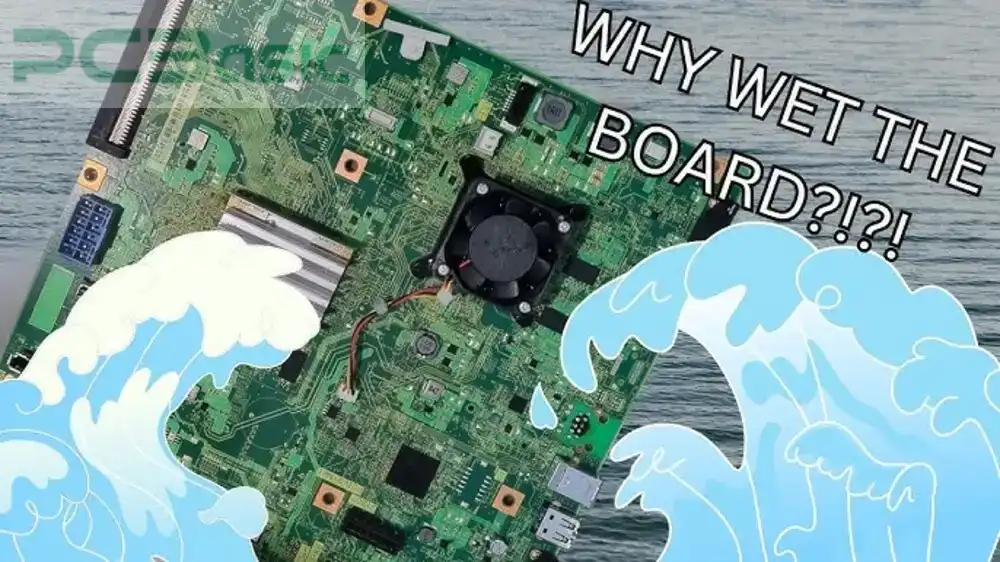
Follow these steps for cleaning the wet PCB circuit board.
1. Disconnect devices from the power source and follow precautions since moisture can cause shock or electric current.
2. Remove connected components on board with accurate directions.
3. Use a dry cloth and clean the remaining liquid on board. During the cleaning of the board, do not rub the board, which can cause scratches on the board and also has a chance to damage components. Just put the cloth on the board and soak up the liquid.
4. Use a rinse on the board to remove sticky components.
5. If you make sure that the board is completely clean from moisture and water components and there are no damaged components on board, connect all removed components for the completion of the circuit again.
If boards are continuously in use in some conditions where different environmental factors exist and affect the board, such as moisture or dust particles that cause board corrosion. So to remove board corrosion, there is a need for proper maintenance.
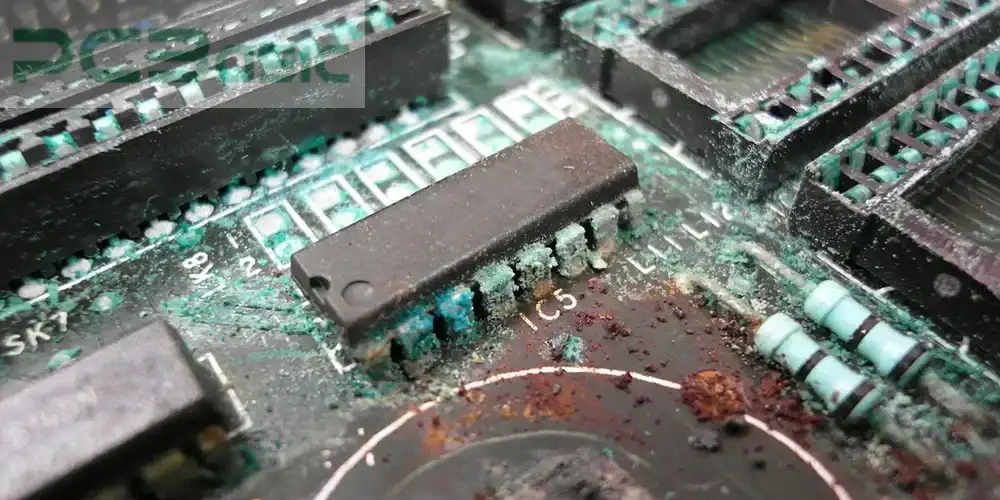
Different methods used for board corrosion are listed here.
Baking soda:
● For removing board corrosion, baking soda is the best option since it is abrasive in nature and can clean the board without any damage.
Household cleaner:
● Different types of household cleaners are used for board cleaning from corrosion and dirt, and commonly used are phosphate-free household cleaners.
Deionized water:
● Use such water for cleaning boards that are free from contaminants. The ions of water can affect component conductive features. So use deionized water that is free from ions or containments and safely clean water.
Thin brush:
● Different toothbrushes or paintbrushes can also be used for board corrosion removal purposes. Use the brush in such a way that does not affect the board component's time of cleaning.
● For proper maintenance of the board and accurate working, you must perform different testing processes to check for any damage to components or any short circuits on the board. With testing, you can find any fault at the starting phase before it becomes serious damage to the board, and it increases board reliability. In the different phases where the board normally tests, you must also check for any faults that are prototyping, manufacturing, assembly, and before installation.
● Cleaning is also a main factor for the proper working of the board, which helps to save the board from any damage due to dirt, dust flux, or other contaminants. For proper cleaning, you must follow safety measures to avoid any damage to components for a longer time working on the board. Different methods and materials are used for board cleaning, such as brushes, solvents, or compressed air to remove dust, moisture, and extra solder on the board.
● For longer work, one must be protected from different environmental conditions, such as shock or operation hazards, that can affect the board badly. These hazards are dust, chemical, heat, or EMI effects. For the protection of the board from these factors, use an accurate enclosure, protection coating, or seals. Use a board where accurate humidity, temperature, and voltage are in controlled conditions for the board to save working.
● Different types of sensitive components are connected on board for the creation of a circuit, and these components can be affected if the voltage range is 3 kV or less. So different components can be damaged due to electrostatic (ESD) resulting from PCB not handling ESD charges. Use ground with a wrist strap connected with earth ground to save the board from ESD.
For longer working and safety of devices where PCB board is used, cleaning and board maintenance are the main factors whose importance cannot be denied. There are different tools and processes used for board cleaning, such as brushes and other cleaning agents. The board cleaning removes the corrosion, dust, and other contaminants, saving the board from overheating and other faults. If you are facing difficulty in cleaning your board with complex design, get help from a professional electronics repair technician or cleaning service.
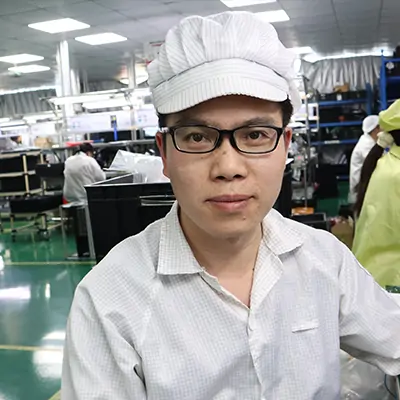
Assembly Enquiry
Instant Quote